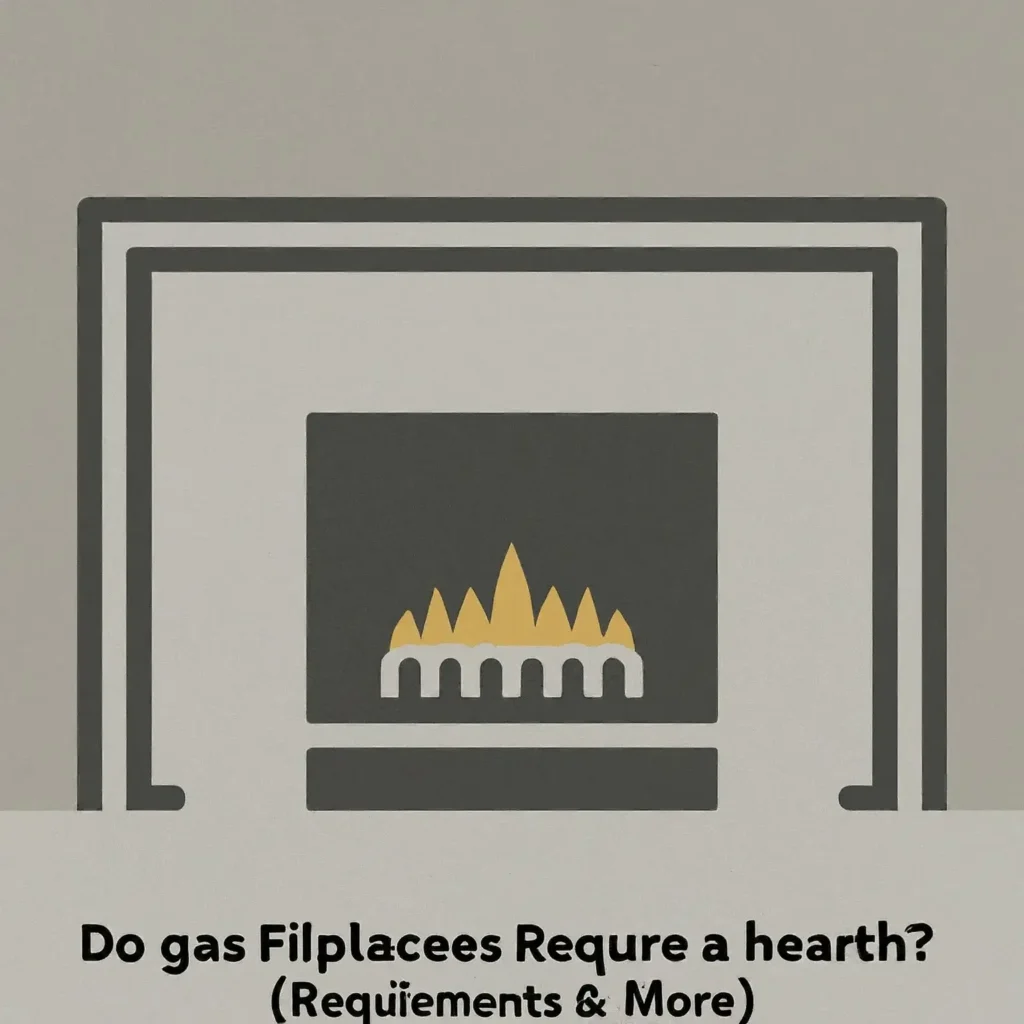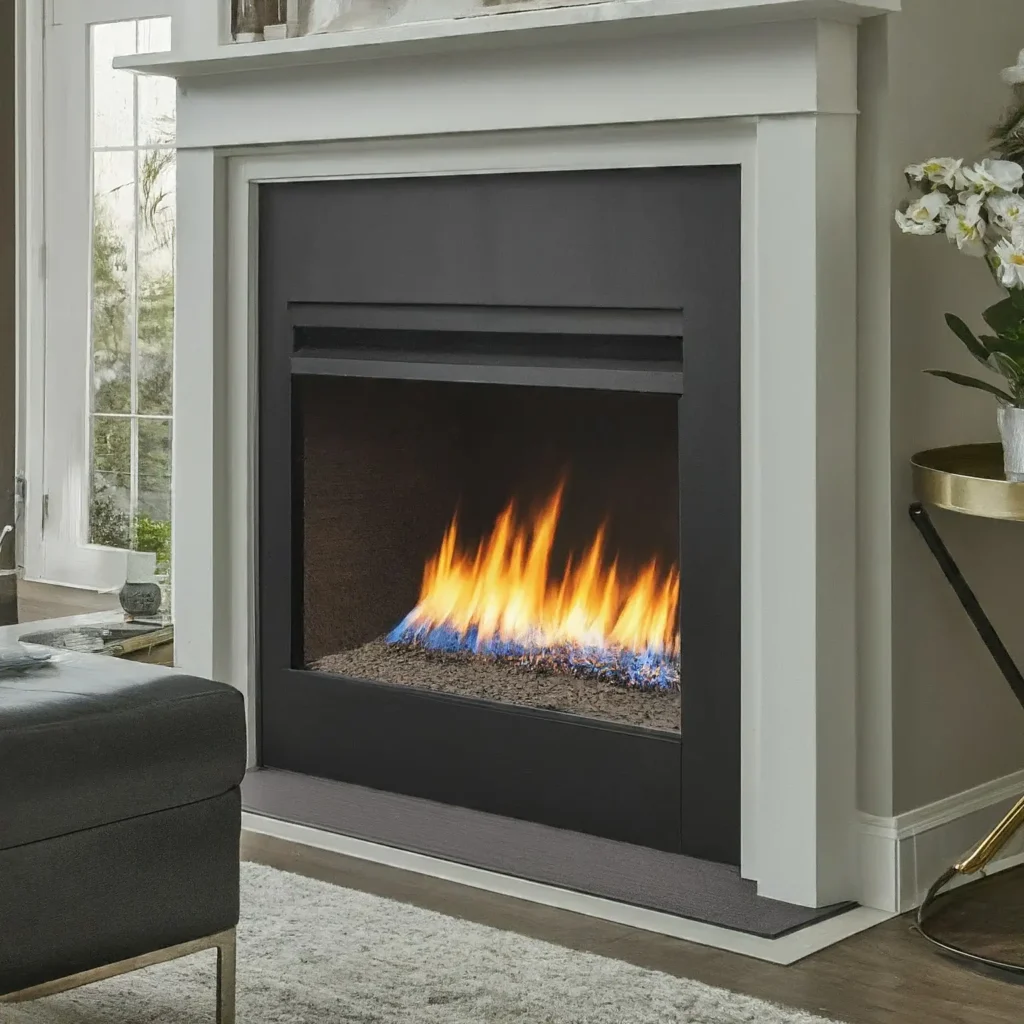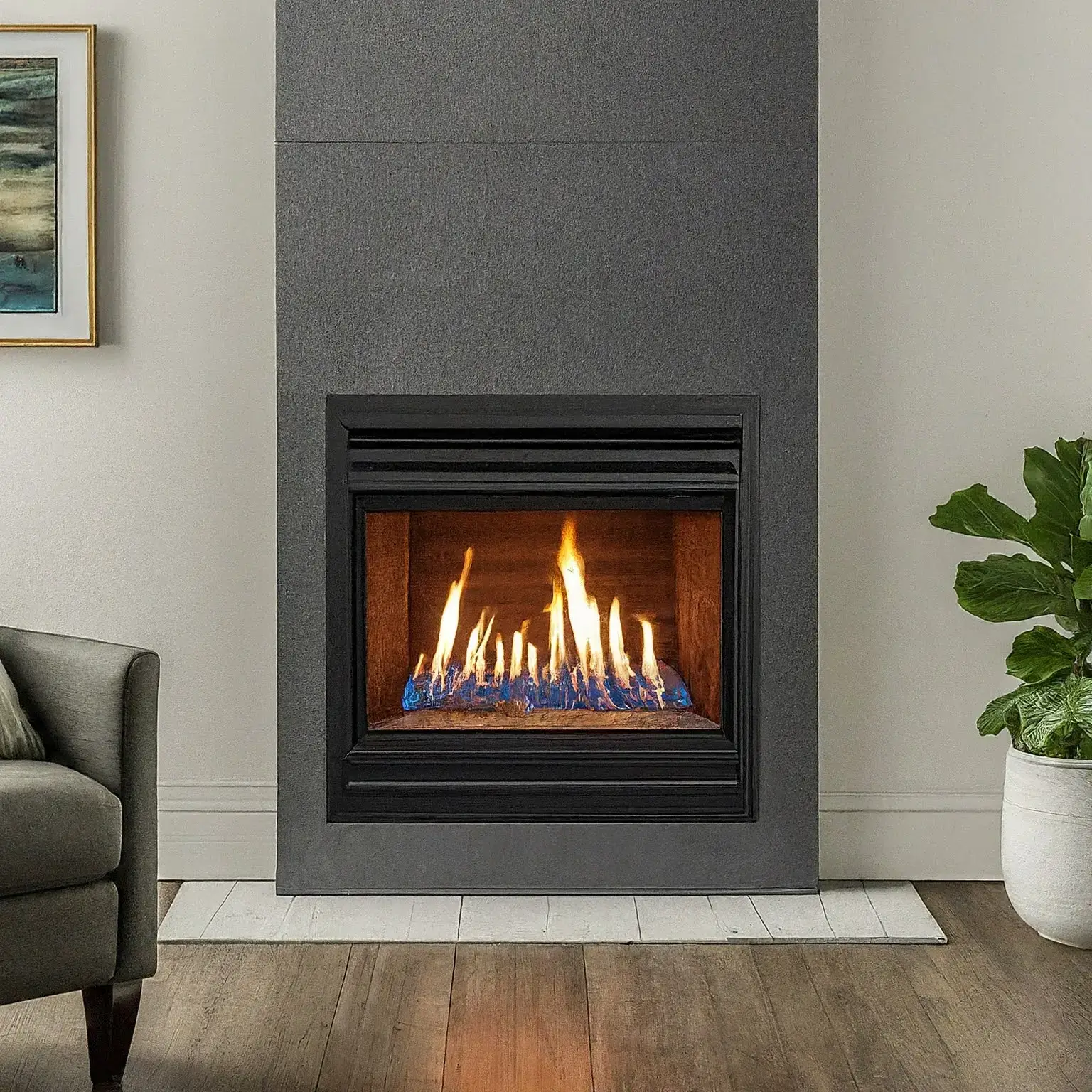Gas fireplaces have become a popular choice in the market, offering innovative features and a range of modern, contemporary, and traditional designs.

But whether you own a sleek contemporary model or a classic design, it’s crucial to understand if a hearth is necessary. Do gas fireplaces require a hearth, and if so, what are the requirements?
Gas fireplaces, which do not involve the combustion of solid fuel, typically do not necessitate a hearth. However, it’s advisable to refer to the manufacturer’s guidelines for specific requirements.
Direct-vent and ventless gas fireplaces often do not require a hearth, while natural-vent gas fireplaces may require one.
To learn more about the types and styles of gas fireplaces that usually require a hearth, read on. We’ll delve into why certain gas fireplaces need a hearth, while others do not, and provide you with essential hearth requirements and considerations before starting the installation.
Do gas fireplaces require a hearth?
Gas fireplaces with an open-front design may require a hearth, as there’s a risk of faux coal and logs falling out. On the other hand, gas fireplaces with a closed design
(glass-fronted) are sealed off from the room and typically do not necessitate a hearth. Natural vent gas fireplaces, which have an open front, often require a hearth, while direct vent and ventless models usually do not.
Additionally, fireplaces designated as “zero clearance” do not require a hearth.
Always check the manufacturer’s requirements in the owner’s manual during installation. Each manufacturer establishes its guidelines, so what may be considered safe for one fireplace model might not apply to another.
Does my gas fireplace need a hearth?

The necessity of a hearth for your gas fireplace depends on several factors, including the type of fireplace, the manufacturer’s specifications, and your local building codes. Always consult your local code regulations and the fireplace manufacturer for guidance. To determine whether your gas fireplace requires a hearth, consider these three factors:
1. The type of fireplace: is it ventless, direct vent, or natural vent (B-vent)?
2. The manufacturer’s requirements: Some makes and models require a hearth (details can be found in the fireplace instruction manual), while others do not.
3. Local or national building codes and regulations: strictly adhere to these guidelines for safety when installing your gas fireplace.
For general measurement requirements for gas fireplace hearths, scroll to the bottom of this article.
What is a Hearth?
A hearth is the non-combustible flooring area within and around a fireplace, typically made of materials like concrete, brick, stone, or slate. It is installed to catch any flying embers and other debris that could potentially ignite combustible surfaces in your home.
A hearth typically appears as a rectangular flooring piece extending from the opening of a fireplace, projecting about 1 to 3 feet into the room. Some gas fireplaces come with built-in hearths for both safety and aesthetic purposes.
What Is The Purpose Of A Hearth?
A fireplace hearth serves to prevent stray embers, debris, or ash from coming into contact with flammable flooring or nearby objects in the room. Since hearths are constructed from non-combustible materials, they help contain potential fire hazards.
Additionally, hearths add an aesthetic touch to the fireplace. There are three main hearth styles, each positioning the hearth slightly differently:

- Raised Firebox: The hearth is placed below the opening of the firebox.
- Raised Hearth: The hearth is above the opening of the firebox.
- Flush Hearth: The hearth is level with the opening of the firebox.


